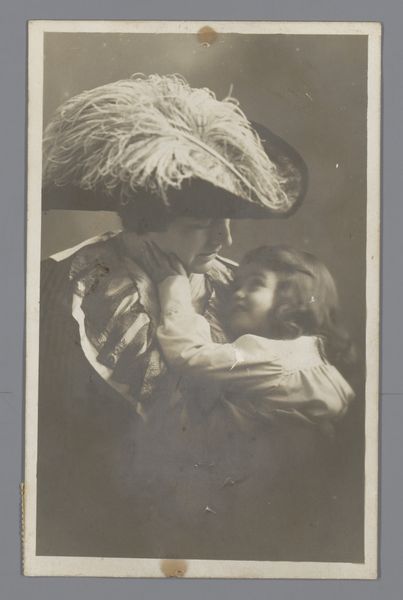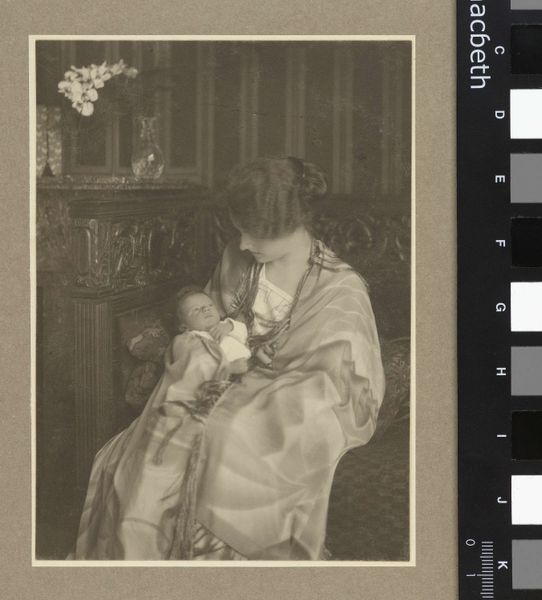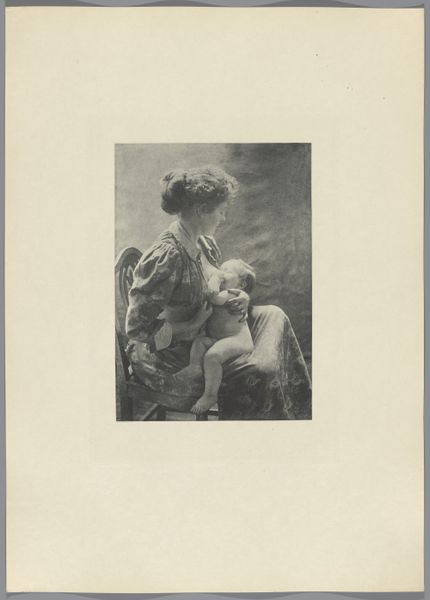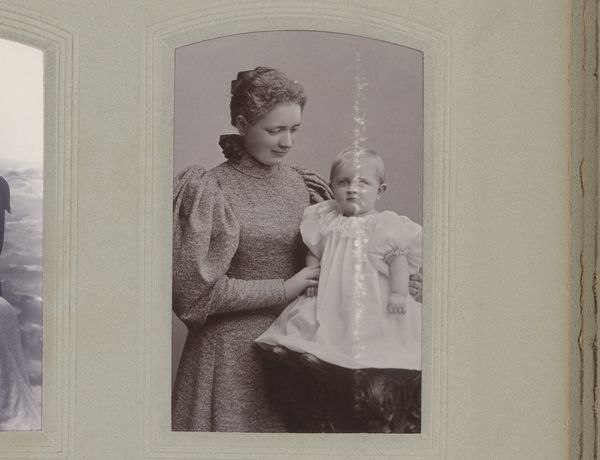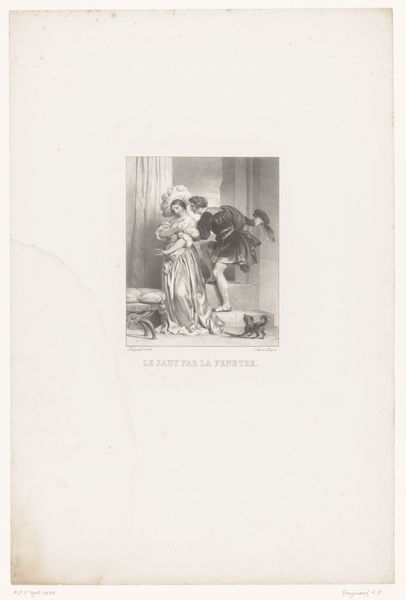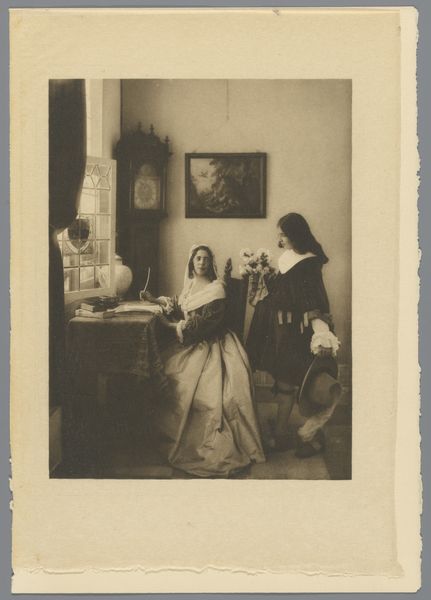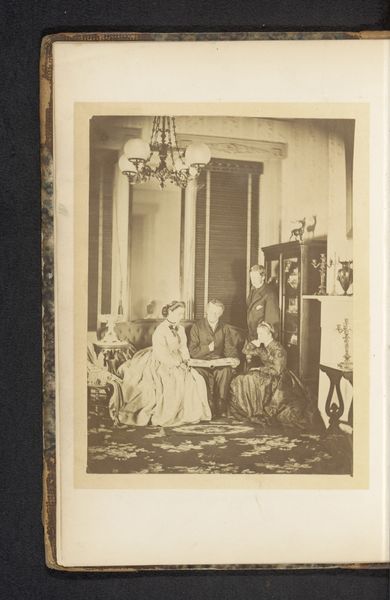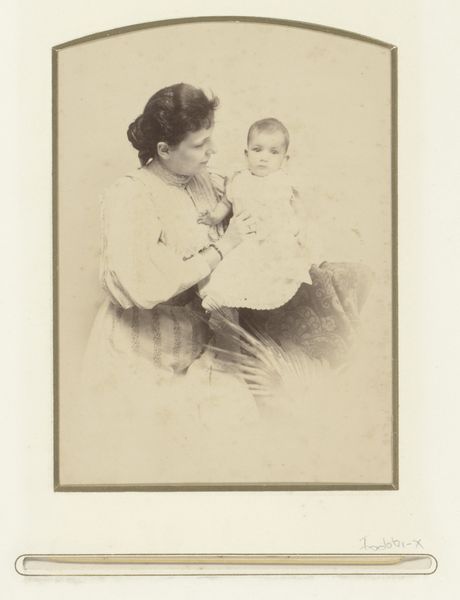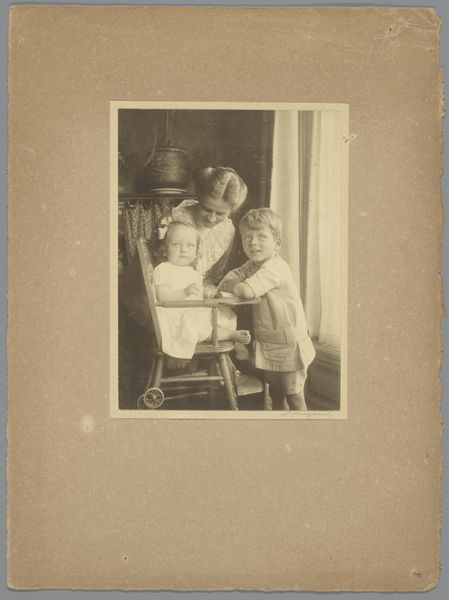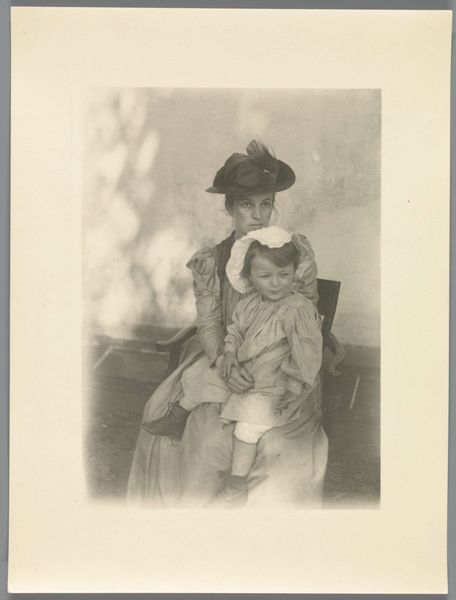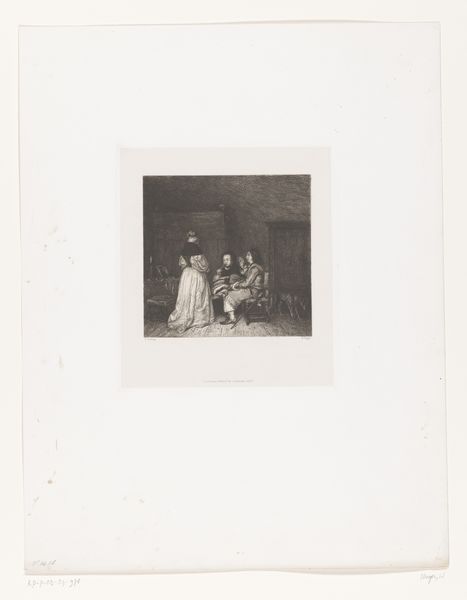
drawing, print, etching, paper
#
portrait
#
drawing
# print
#
impressionism
#
etching
#
figuration
#
paper
#
genre-painting
Dimensions: 200 × 152 mm (image/plate); 368 × 240 mm (sheet)
Copyright: Public Domain
Curator: Julian Alden Weir's "Christmas Greens," an etching dating back to 1889, now held at the Art Institute of Chicago. Editor: Immediately, it's this hushed intimacy that strikes me. A quiet domestic scene rendered in delicate lines, all focused on the mother and child. It's like a captured breath. Curator: The process of etching allows for such detail, doesn't it? Consider the labor involved in preparing the plate, the precise application of the acid. Etchings democratized image production to some extent, expanding visual culture. Editor: Exactly. But here, the 'how' becomes invisible; you’re drawn into this world where the making-of melts away. It evokes that childhood anticipation for Christmas, the house smelling of pine and baking. The print really transmits a certain sentimental mood that still gets to us today. Curator: Yes, Weir manages to suggest that sentiment while engaging with the genre painting conventions of his era. Observe how the wreath, traditionally associated with celebration, is subtly placed— almost an afterthought. Its very existence underlines the family unit as a unit of social, almost economic reproduction. Editor: Maybe. Or maybe it’s simpler: a memento of joy hanging on the window frame, radiating the domestic hearth! But looking closely, what is it the mother and daughter are actually doing? Is there a garland in both hands? Or are they maybe adorning a Christmas tree, decorating the house together. It suggests such tender interaction! Curator: And the material implications of this moment extend outward. We see consumption habits, the purchasing or gathering of "greens," becoming a ritualized performance of bourgeois identity and, of course, gender roles. Editor: Perhaps so. For me it stays this simple shared joy, and its skillful representation. Even this reproduction captures the sensation in the space it holds so beautifully, as it pulls on the strings of remembrance. Curator: Fair enough. For me, it opens avenues of thought around the art market and gendered labour of care during that era. An endless interpretative back-and-forth. Editor: Just like this echo of memory, preserved in ink and paper, which will always tug differently at everyone's own heartstrings.
Comments
No comments
Be the first to comment and join the conversation on the ultimate creative platform.

